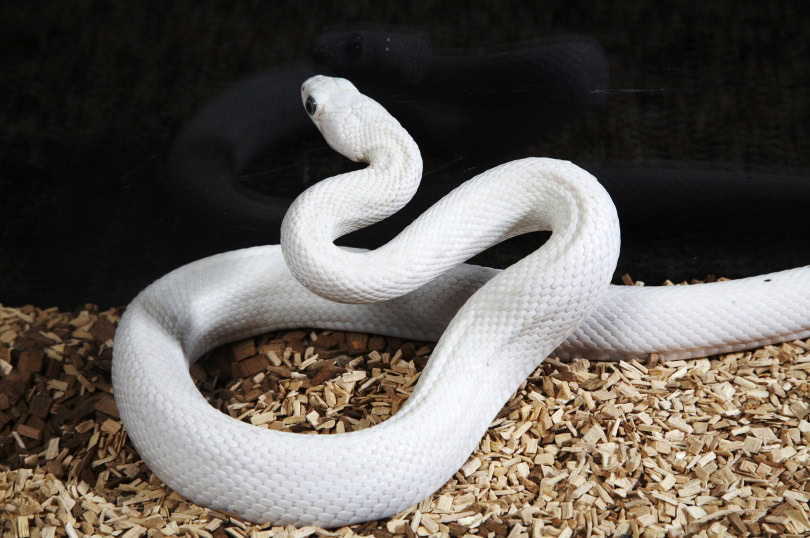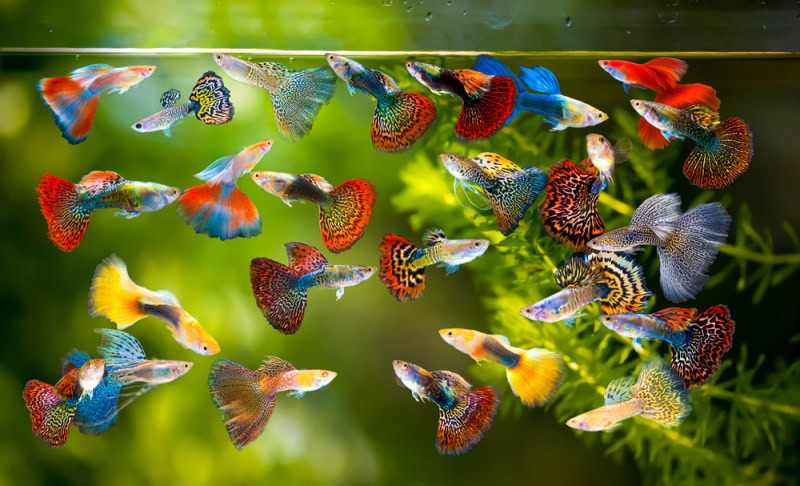The Ball Python is one of the most popular types of reptiles kept as pets in America. It is available in a wide variety of colors and patterns, usually referred to as “morphs.” These result from selective breeding. However, the Leucistic (White) Ball Python is one of the most amazing morphs available. Its striking white color and dark eyes will stop anyone in their tracks.
If you are interested in learning more about this rare morph, keep reading as we look at several interesting facts about it, so you can see if it’s something that you want to seek out as your next pet snake.

The 20 Leucistic (White) Ball Python Morph Facts
1. Definition of Leucism
Leucism is a term that means the animal doesn’t produce melanin as well as it should, resulting in a loss of pigment.
2. Eye Color Distinction
Leucistic animals can lose almost all of their pigment and appear white, but their eyes will remain dark, unlike albino animals.
3. Partial Pigmentation & Color Retention
Some leucistic snakes will retain some of their pigment, and patterns and colors may still be visible. Black is often a color that remains after the others have faded.
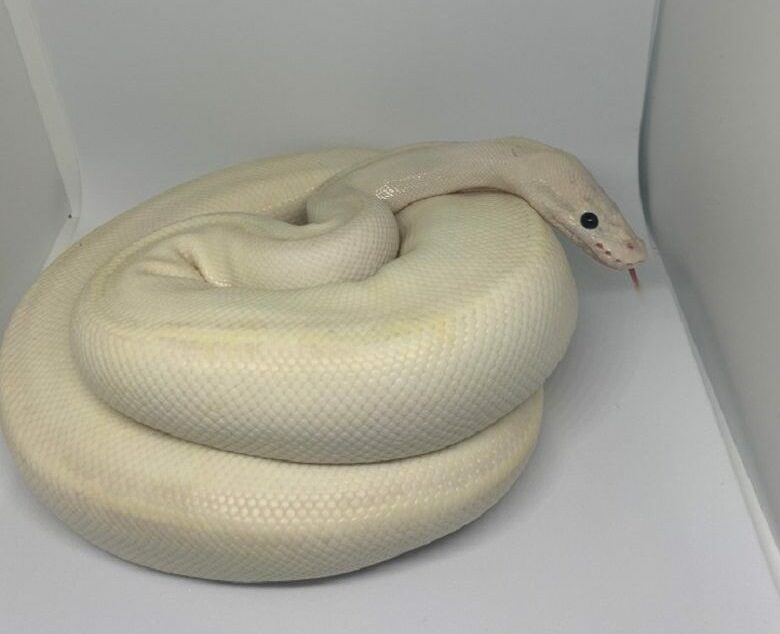
4. Leucism in Other Snakes
Other snakes besides the Ball Python can be leucistic, including the Texas Rat Snake.
5. Leucism in Other Species
Other animals besides snakes can be leucistic, including killer whales, axolotls, giraffes, buffalo, and many deer species.
6. Piebald Mutation Relation
The piebald mutation found in many animals, including dogs, cats, and horses, might be a type of leucism.
7. Types of Leucistic Snakes
There are two types of leucistic snakes: a Blue-Eyed Leucistic and a Black-Eyed Leucistic.
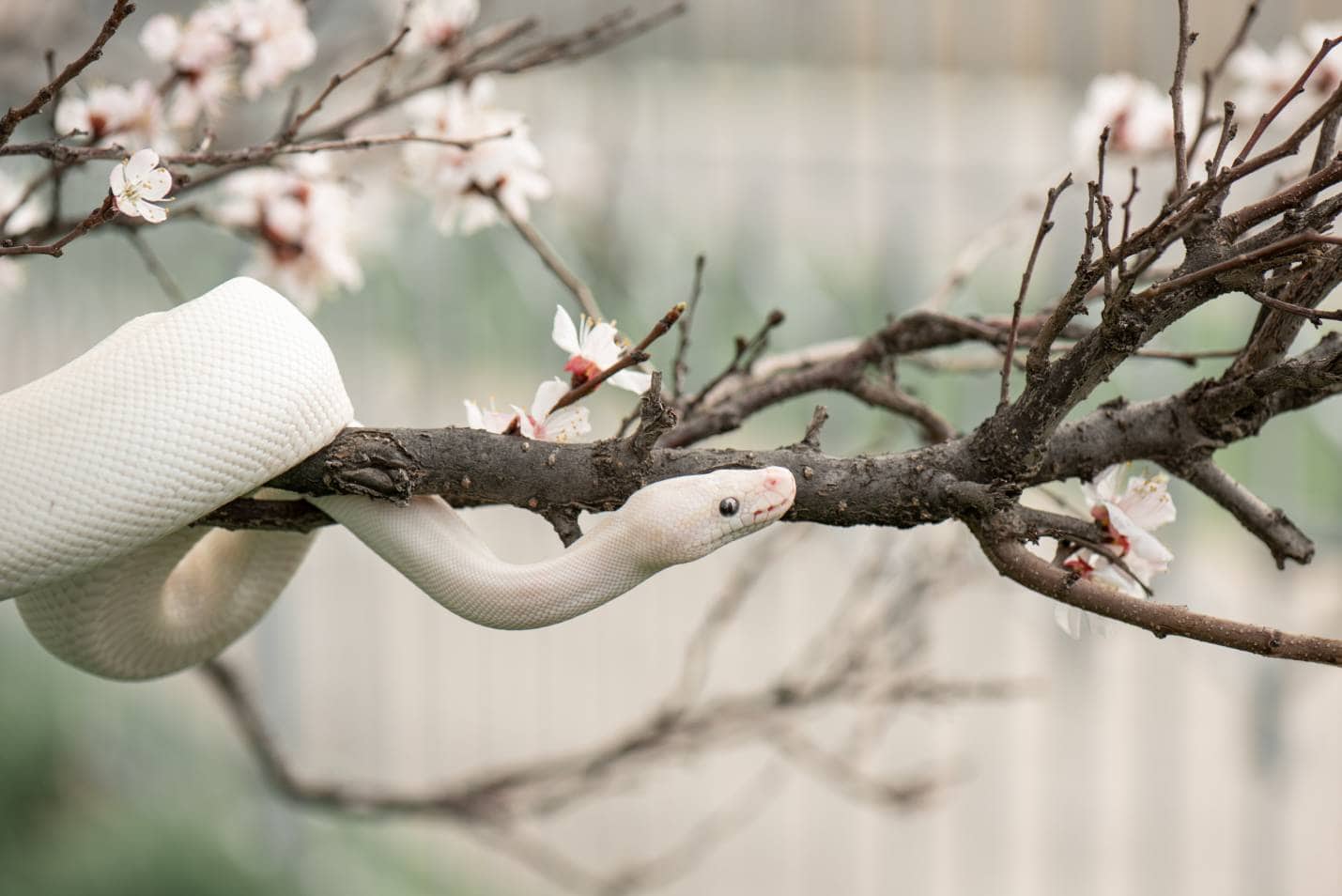
8. Ivory Morph Comparison
The Ivory Ball Python morph is quite similar in appearance to the leucistic varieties, but it is not the same. It usually appears pinker in color, and the pattern is usually more visible.
9. Genetic Influence
Animals with one copy of the leucistic gene will have a minor pigment reduction, while snakes with two copies will have a dramatic leucistic white appearance.
10. Creating Black-Eyed Leucistics
The Black-Eyed Leucistic morph is much easier to create than the Blue-Eyed Leucistic and only requires breeding two Yellow-Bellied Ball Pythons together.
11. Breeding Outcomes
Breeding two Yellow-Bellied Ball Pythons should result in a clutch containing 25% Black-Eyed Leucistic snakes.
12. Blue-Eyed Leucistic Genetics
The Blue-Eyed Leucistic morph is associated with several different genes called a “complex,” which you can combine to create the blue eye color.
13. Mutations Associated with the Blue-Eyed Leucism
The mutations associated with the blue-eyed genes include Mojave, Butter, Lesser Platinum, Bamboo, Phantom, Mystic, Mocha, Special, and Daddy. The list is growing as more mutations get discovered.
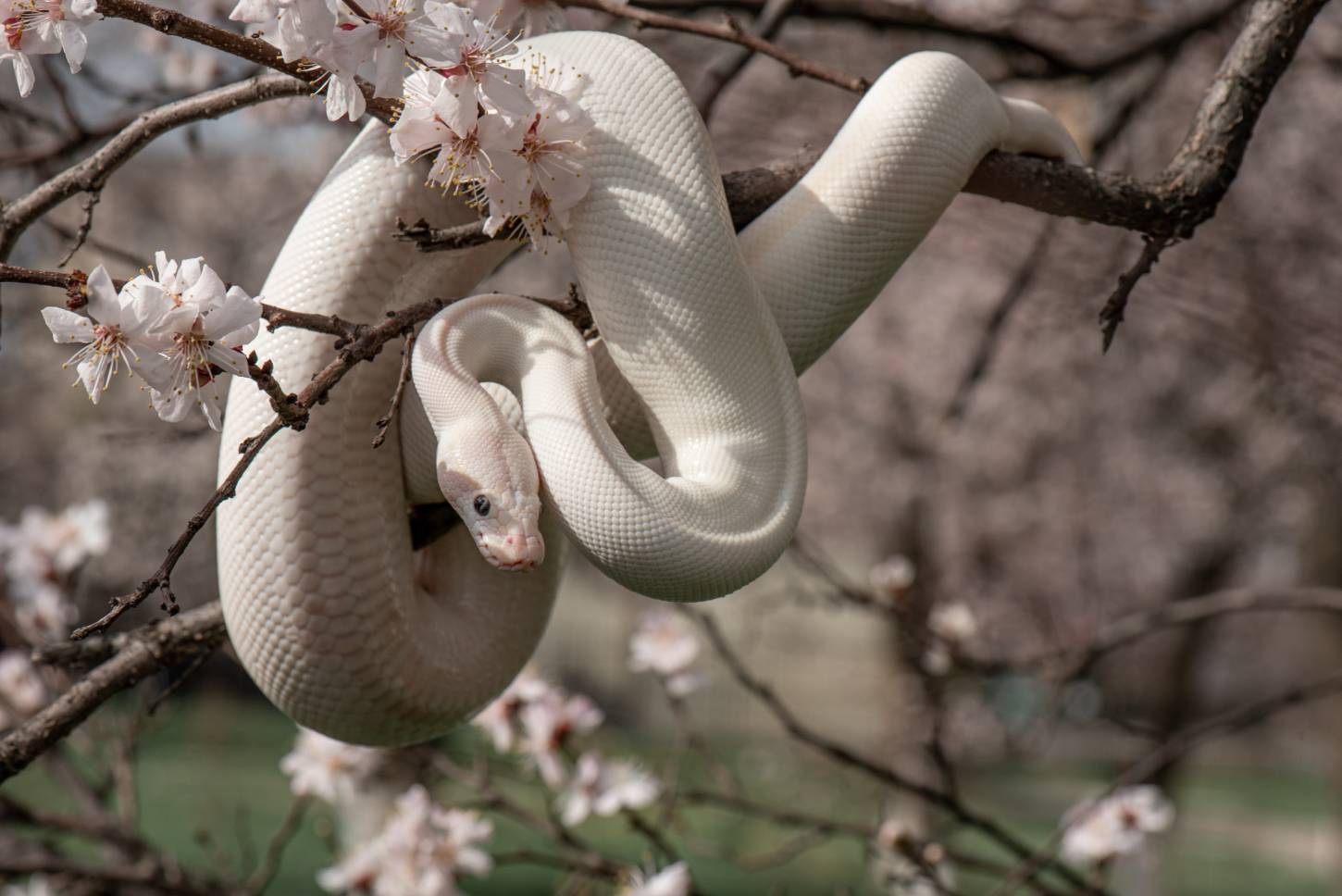
14. Health Concerns
Some mutations associated with blue eyes, like the Spider mutation, can lead to health problems.
15. Eye Protrusion
Some Blue-Eyed Leucistic snakes can have protruding eyes, and it seems to be more common in snakes created using the Butter or Lesser Platinum mutations. However, the eyes don’t seem to bother the snake or cause it to be unhealthy.
16. Dietary Recommendations
Blue-eyed leucistic snakes with bulging eyes may require a diet of thawed frozen animals to protect the eyes from the damage that might occur when capturing live prey.
17. General Health
Most Leucistic Ball Python morphs are perfectly healthy.
18. Care Requirements
Leucistic Ball Pythons require the same care as any other Ball Python morph, and you will need to provide it with the same space, temperature, humidity, and diet.

19. Sensitivity to Light
Leucistic Ball Pythons do not seem to be sensitive to light like albino animals, but they will usually choose to avoid it since they are primarily nocturnal.
20. Breeding Achievements
Not long ago, there were no white snakes available, and only the hard work of breeders made it possible.

 Final Thoughts
Final Thoughts
The Leucistic (White) Ball Python morph is an impressive and striking animal, whether it has black eyes or blue. It’s an extremely rare morph but becoming more popular as breeders become more proficient at creating them. So, there is still plenty of time for you to become one of the first people in your area to own one of these unique pets. It doesn’t require any more care than any other Ball Python, so if you already have experience raising snakes, you will feel right at home with it.
Featured Image Credit by anythings, Shutterstock
Contents
- The 20 Leucistic (White) Ball Python Morph Facts
- 1. Definition of Leucism
- 2. Eye Color Distinction
- 3. Partial Pigmentation & Color Retention
- 4. Leucism in Other Snakes
- 5. Leucism in Other Species
- 6. Piebald Mutation Relation
- 7. Types of Leucistic Snakes
- 8. Ivory Morph Comparison
- 9. Genetic Influence
- 10. Creating Black-Eyed Leucistics
- 11. Breeding Outcomes
- 12. Blue-Eyed Leucistic Genetics
- 13. Mutations Associated with the Blue-Eyed Leucism
- 14. Health Concerns
- 15. Eye Protrusion
- 16. Dietary Recommendations
- 17. General Health
- 18. Care Requirements
- 19. Sensitivity to Light
- 20. Breeding Achievements
- Final Thoughts
